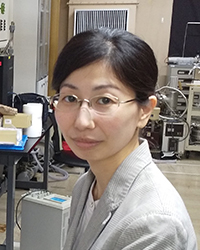B01 “Nuclear Quantum Effects Unraveled through Full-Degree Quantum Chemistry and Precise Molecular Spectroscopy with Optical Frequency Combs”

Principle Investigator:
Kana Iwakuni
(Institute for Laser Science(ILS), University of Electro-Communications (UEC), Associate Professor)
Molecules are finite quantum many-body systems composed of atoms and electrons, and their behavior can be accurately understood by rigorously solving the fundamental equation, the Schrödinger equation. Traditional quantum chemical calculations have developed with a focus on solving the Schrödinger equation for electrons under the Coulomb potential arising from atomic nuclei, which are approximated as point charges. Within this approximation, the quantum nature of the nuclei cannot be accounted for, making it difficult to evaluate the unique properties of molecules containing light atoms such as hydrogen. The quantum nature of the nuclei plays a crucial role in the molecular evolution process starting from hydrogen molecular ions in the interstellar medium. To construct a molecular description of this process, it is essential to treat not only the electrons but also the nuclei quantum mechanically.
In molecular spectroscopy experiments, which observe the stationary states of molecules using transition frequencies and transition intensities as indicators, the effects of nuclear quantum mechanics can be quantified as the splitting of spectral lines. However, there is a lack of a sufficiently developed theoretical framework for this evaluation, and obtaining high-precision spectra for molecular systems where the quantum nature of hydrogen atoms is important remains a significant challenge due to the need for improved experimental measurement precision and sensitivity.
In this context, the B01 team proposes applying the Gaussian expansion method based on infinitesimal displacement Gauss-Lobe basis functions, developed by team A, to quantum mechanically treat the full degrees of freedom, including both electrons and atomic nuclei. This approach is expected to enable calculations of the molecular stationary state energies that surpass spectroscopic accuracy. Furthermore, in spectroscopic experiments, a new precision spectroscopy method will be developed by combining a specialized laser known as an optical frequency comb with cutting-edge high-sensitivity spectroscopic techniques. This method will allow for the quantitative evaluation of nuclear quantum effects even in complex systems, such as multidimensional tunneling splittings.
By merging full-degree quantum chemical calculations with novel precise spectroscopic experiments, this research aims to establish a foundation for understanding, predicting, and utilizing nuclear quantum effects in molecular and molecular-network systems.
